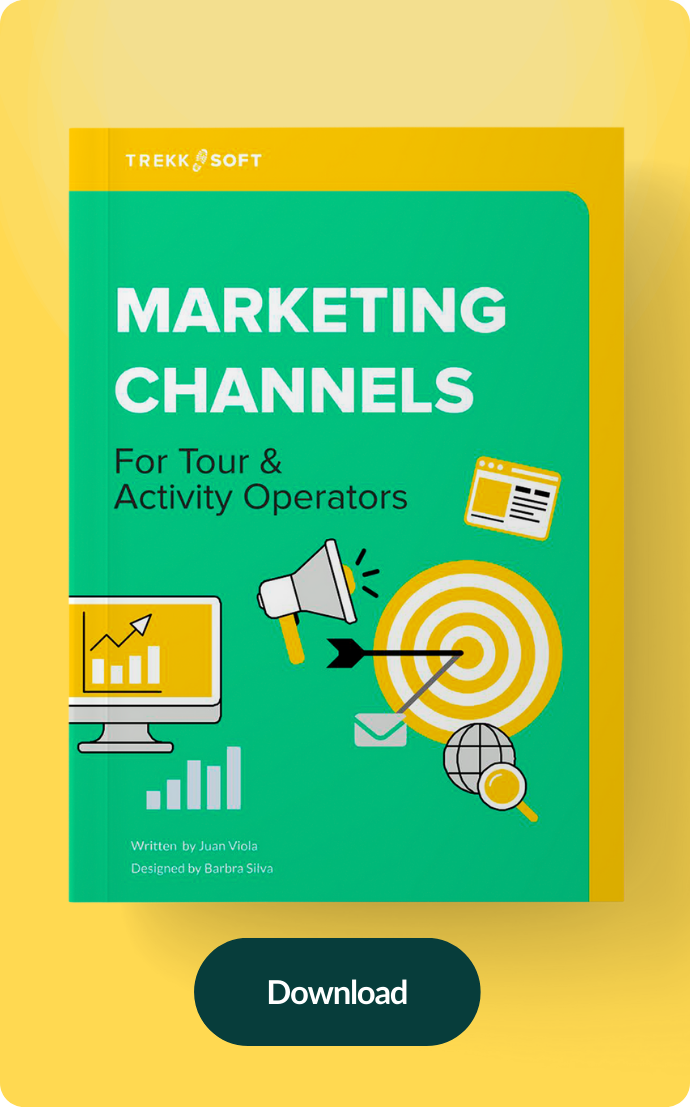As a tour operator, you must love the high season. Activity providers are energetic about the high demand, the influx of guests, and busy days. But the fact is that seasonality is a reality in the tourism industry.
The low season might get quiet and can be challenging for companies and destinations. But some great opportunities come with working in such a seasonal sector. So, instead of fighting the off-season, here are the 6 key strategies to make the most of the low season:
- Run annual analyses
- Prepare for next season
- Gather feedback and testimonials
- Focus on your online efforts
- Go Local
- Make the most of low season
1. Run annual analysis
A data-driven culture is a key to a successful business. We constantly reinforce the importance of collecting and adequately analyzing data from your tour & activity company.
As the low season tends to get quieter, it's the perfect time to do all the things you don't have time to do during the high season. And the very first step to correctly identifying what you should focus on starts by analyzing your previous year and coming up with an actual plan for the year ahead.
Here is some data you should look into:
- Understand your total capacity and the percentage of your bookings: which days were you fully booked? If you increase your staff or resources on those days, could your company get more bookings with the same service level?
- Get more insights from your customer profile: it goes from the average age to specific behaviors such as: does your customer travel solo? With family and friends? How do they find out about your company?
- Booking behavior: Do you usually get last-minute bookings, or does your target typically plan in advance? Would your customers prefer to book online? Are they reaching out via email, phone calls, or directly on your website and OTAs?
- Internal structure: more than just your resources and staff members, think about the possible improvements you can make. It goes from having a more attractive sales desk to investing in your website to get more direct bookings.
Here's a practical guide on how to turn your company's data into valuable insights
2. Prepare for next season
Based on the hits and misses of the previous year, you can now come up with a plan for the next season and year. Think about what you can do during the low season to have an even more successful high season in the upcoming year.
Once you go through the data and insights, think about the action plan and be strategic about what you can get done during the low season. Our special tip here is to focus first on what you usually need more time for during the high season.
Consider the year ahead and write down all the events for the upcoming months. Is it more effective to focus on your website first? What actions should you take first, and what can't wait until the high season gets closer?
Remember that travelers' behavior has changed after COVID-19, and look at our article about post-pandemic travel trends.

3. Gather feedback and testimonials
Throughout the previous steps, part of the data analysis and even the action plan will rely on customers' feedback in person or online. According to research by Four Pillar Hotels, 70% of travelers trust online consumer reviews. But, at the same time, 22% of people will leave a review without being asked.
So the low season is the perfect time to take the opportunity to reach out to your customers and request online reviews. It will help you understand the perception of your business and services and work as a fuel to travelers researching for activities on their next vacation.
To be successful, use your email list and get in contact with previous customers. You can send a specific email asking for feedback and even offer vouchers and discounts, so your customer returns next season or indicates your company to friends and family.
Here are 7 reasons why customer reviews are important for your tourism website
4. Focus on your online efforts
Even when people are not traveling, they might be thinking about it. Travelers usually go through the dreaming phase before planning a vacation and even booking activities. Many steps on the customer journey come before the actual bookings.
The best way to keep your business on the traveler's mind is to focus on online efforts. Stay active on social media and publish unique photos and videos. This way, you will show up on travelers' feeds, and they might even start planning their trip from that.
Other essential strategies include content creation, and you might update your website with the most recent information and write blog posts with specific tips for your destination.
And, of course, you must focus on your website to improve your direct bookings. Here are the basics to building a great tour operation and activity provider website.

5. Go Local
A fundamental part of working with seasonality is understanding the traveler's behavior towards it. Generally, the high season attracts travelers from other cities and countries. Therefore, the low season is usually the best time to attract local customers.
It's impressive how people don't tend to be as curious about their location as they are about new destinations. So, it would be best if you worked with specific strategies when it comes to locals. For example, you might offer special discounts or even add a special bonus.
Going local also means reaching out to other local companies for partnerships. Think together about special deals and local events. Keep in mind that locals are excellent word-of-mouth advertising for your company.
6. Make the most of low season
More than just being strategic about the low season, you want to drive sales during those months too. A great strategy is to work with specific seasonal tours. It's a great time to test out new tours and activities, for example.
More than just having specific services for the season, you can also work with seasonal or progressive pricing. It works wonders for travelers who prefer to avoid high season, adds value to your business, and keeps people talking about you.
Here's a specific guide on how to market your tours in low season

Extra tip: power your business with TrekkSoft
TrekkSoft is the leading solution to manage your business and operations from high to low season. Here are the highlights on how TrekkSoft can help your tour and activity business to deal with seasonally:
- Business Intelligence: once you work with TrekkSoft, our software will gather all booking-related data. Therefore, you can use our reporting and analysis tool to make data-driven decisions.
- Boost Distribution: with TrekkSoft, you can connect and manage bookings from online travel agents, work with resellers and travel partners and manage sales channels tracking every booking.
- Streamline operations: TrekkSoft helps you to manage your resources, get an overview of availability, automatically sync trips to your calendar and automate repetitive tasks to improve back-office processes.
- Sell more online and offline: accept online bookings, get credit card payments, and work with the Point of Sale Desk.
If you are willing to work with the ultimate booking solution for your tour and activity business, request a Demo with TrekkSoft's business development team today!


.png)

